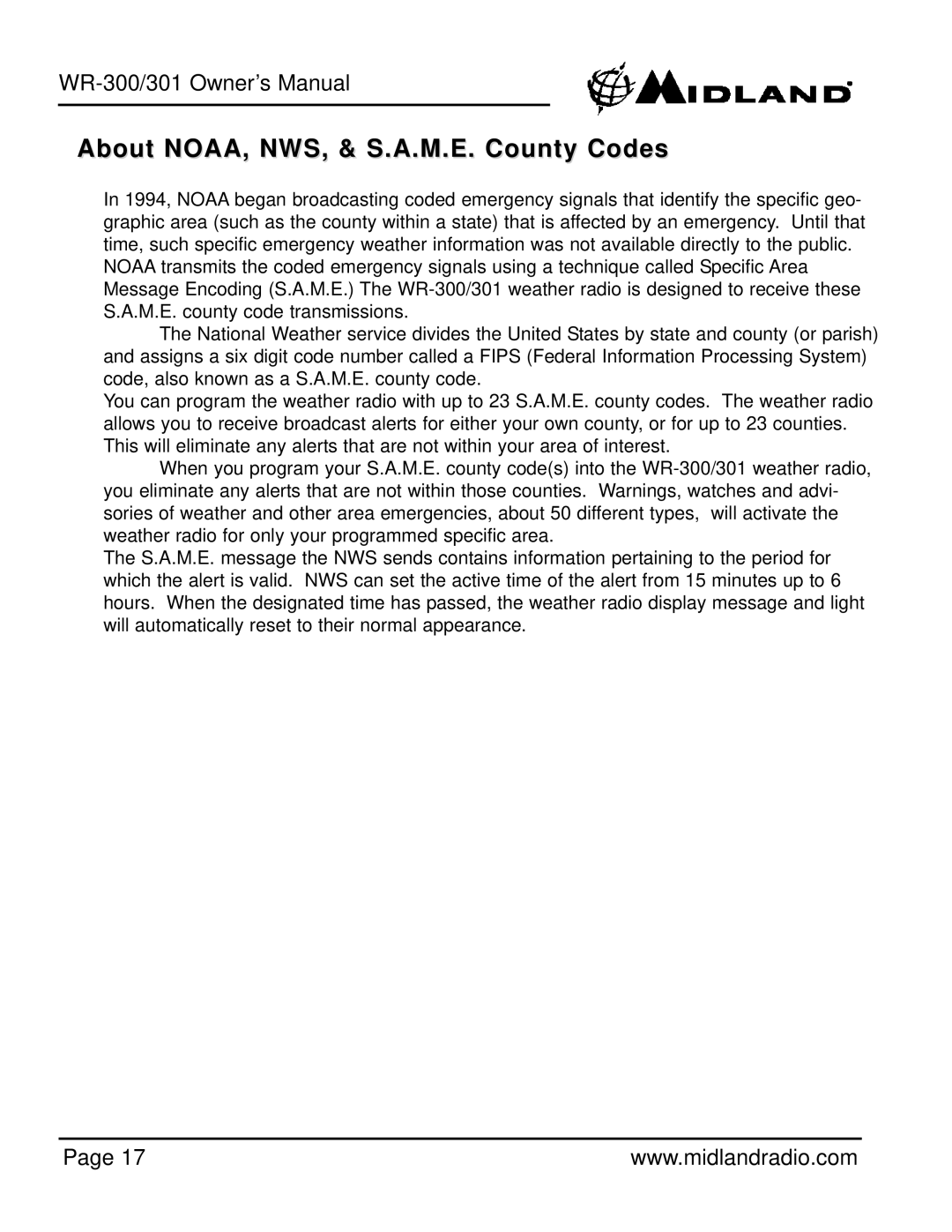
About NOAA, NWS, & S.A.M.E. County Codes
In 1994, NOAA began broadcasting coded emergency signals that identify the specific geo- graphic area (such as the county within a state) that is affected by an emergency. Until that time, such specific emergency weather information was not available directly to the public.
NOAA transmits the coded emergency signals using a technique called Specific Area Message Encoding (S.A.M.E.) The
The National Weather service divides the United States by state and county (or parish) and assigns a six digit code number called a FIPS (Federal Information Processing System) code, also known as a S.A.M.E. county code.
You can program the weather radio with up to 23 S.A.M.E. county codes. The weather radio allows you to receive broadcast alerts for either your own county, or for up to 23 counties. This will eliminate any alerts that are not within your area of interest.
When you program your S.A.M.E. county code(s) into the
The S.A.M.E. message the NWS sends contains information pertaining to the period for which the alert is valid. NWS can set the active time of the alert from 15 minutes up to 6 hours. When the designated time has passed, the weather radio display message and light will automatically reset to their normal appearance.
Page 17 | www.midlandradio.com |
